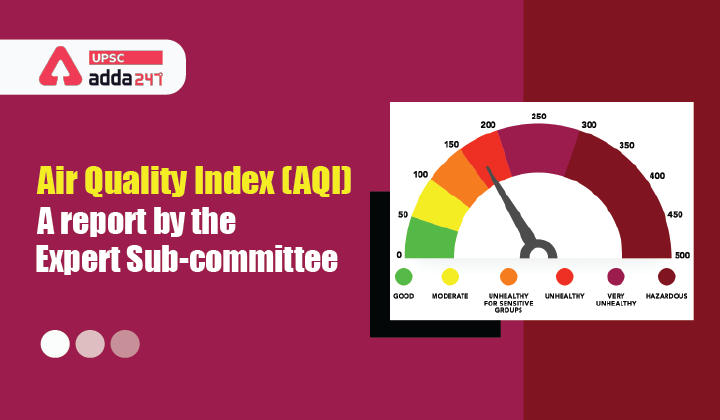Table of Contents
Air Quality Index (AQI)- Relevance for UPSC Exam
- GS Paper 3: Environment- Conservation, environmental pollution and degradation.
Air Quality Index (AQI)- Context
- A day after Deepavali, the Air Quality Index (AQI) in Delhi, Faridabad, Noida, Gurugram and Ghaziabad shot to over 450 or at the highest level of pollution severity called ‘severe.’
Air Quality Index (AQI)- Expert sub-committee report
- Key Findings: The expert sub-committee blamed “Sudden unforeseeable low winds” (and not the firecrackers or stubble burning) as the key cause for the noxious air quality.
- This expert sub-committee is tasked with recommending pollution control measures under the Graded Response Action Plan (GRAP).
- Associated Concerns: It chose to ignore a scientific report from the Central Pollution Control Board (CPCB) and the India Meteorological Department (IMD).
- CPCB and IMD report explicitly hold “… crackers, biomass burning and unfavourable weather conditions that brought AQI to severe.”
WHO Global Air Quality Guidelines 2021-Impact on health and key changes
Air Quality Index (AQI)- Associated Impact
- Authority of the Sub-committee: According to the provisions of the GRAP, ‘severe’ air quality can prompt the sub-committee to order-
- A halt on inbound trucks to Delhi or
- Odd-even restrictions on cars as well as
- closure of brick kilns, stone crushers.
- Steps taken by the sub-committee: It has recommended that-
- Government and private offices and other establishments reduce vehicle usage by at least 30% (by working from home, carpooling, etc.) and
- Pollution control implementing agencies to step up their efforts.
National Environmental Engineering Research Institute (NEERI)
Air Quality Index (AQI)- Key Points
- About AQI: Air Quality Index (AQI) is a metric that is used for measuring the air quality of a particular area.
- Objective: Air Quality Index was launched in 2014 with an outline ‘One Number – One Color -One Description’ for the common man to judge the air quality within his vicinity.
- Development of Air Quality Index (AQI): It has been developed by the Central Pollution Control Board (CPCB) with the help of IIT-Kanpur and other experts in the field.
- Pollutants Monitored by AQI: Air Quality Index (AQI) monitors following eight major air pollutants in the atmosphere namely-
-
- Particulate Matter (PM10)
- Particulate Matter (PM2.5)
- Nitrogen Dioxide (NO2)
- Sulphur Dioxide (SO2)
- Carbon Monoxide (CO)
- Ozone (O3)
- Ammonia (NH3)
- Lead (Pb)
- Categorization of Pollution Level: Air Quality Index measures air quality in an area in terms of six categories:
- Good
- Satisfactory
- Moderately Polluted
- Poor
- Very Poor and
- Severe
COP26 Glasgow Summit of UNFCC- India’s Commitments
Air Quality Index (AQI)- Categorization based on One Number-One Color -One Description’
- Weightage of Pollutants is decided as per their impact on the environment and subsequently on human health.
- Under AQI, a composite number is prepared and single colour is given for the quality of air on a particular day.
- This is to ensure that common people understand the level of pollution in their vicinity and associated health impact.
| Colour | Level of Health Concern | AQI Values |
| Green | Good | 0 to 50 |
| Yellow | Moderate | 51 to 100 |
| Orange | Unhealthy for sensitive groups | 101 to 150 |
| Red | Unhealthy | 151 to 200 |
| Purple | Very Unhealthy | 201 to 300 |
| Maroon | Hazardous | 301 to 500 |





 TSPSC Group 1 Question Paper 2024, Downl...
TSPSC Group 1 Question Paper 2024, Downl...
 TSPSC Group 1 Answer key 2024 Out, Downl...
TSPSC Group 1 Answer key 2024 Out, Downl...
 UPSC Prelims 2024 Question Paper, Downlo...
UPSC Prelims 2024 Question Paper, Downlo...




